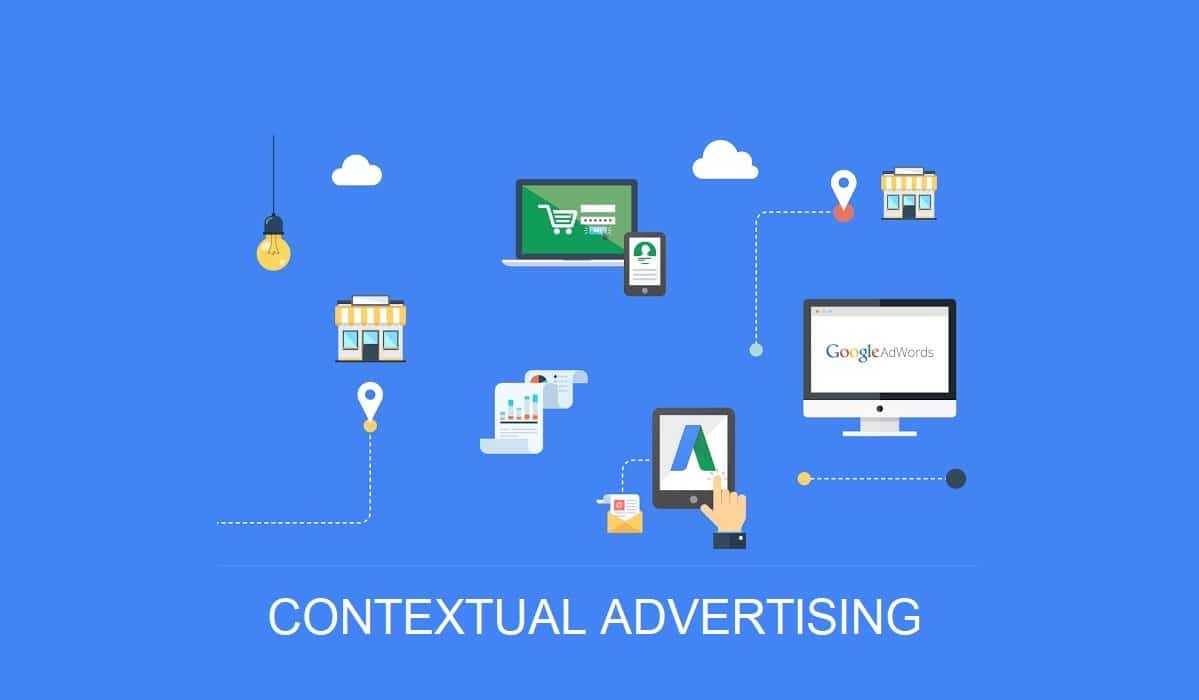According to the source, Contextual advertising has been a type of targeted advertising on sites and perhaps other media, like content displayed via mobile browsers. Automated systems pick and display the ads themselves, depending on the sense of what a consumer is gazing at.
The contextual advertising system inspects a site’s text for keywords as well as returns ads based on such keywords to the website page. The ads could be showcased on either the webpage or even as pop-up advertisements. For instance, if the customer visits a sport-related website or the site utilizes contextual advertising, that user can see ads for sport-related companies, like memorabilia dealers, ticket vendors, etc. The contextual advertisement has been used by web pages to advertise online centered on keywords throughout the user’s request on the search pages.
Contextual advertising is a type of marketing campaign wherein the context of either an advertisement is directly associated with that of the website page viewed by the customer. A definition of contextual advertisement is an advertisement that provides a unique price for a trip to Italy that appears on a European travel website. Contextual advertisement is also known as “In-Text” or/and “In-Context” ads.
What Is Contextual Advertising?
In other words, Contextual advertising is a web advertisement related to the nature of the webpage. Automated systems feature advertisements relevant to the site’s content via conventional contextual advertising, relying upon keyword targeting.
Google AdSense is among the most common manifestations of contextual advertising. Google’s robots conveniently display user-relevant ads. For instance, if you are running a film review site, AdSense may serve contextual advertisements to purchase cinema tickets or registration of any streaming service. The advertisements are chosen from the stock of advertising companies who register via AdWords.
A few contextual advertisement examples entail:
In-game contextual advertising
Sony’s Wipeout HD became among the first online games that featured preloading contextual ads.
In-video contextual advertising
One example of such a form of contextual advertisement will be a shampoo’s YouTube commercial displayed in front of a video demonstration about how to trim your very own hair.
Native advertisement
Native advertisement is a type of contextual advertisement, where supported ads are made to resemble like the site’s native stuff. (sometimes this is viewed as the deceptive advertising experience.)
Behavioral advertisement
It is expected that behavioral ads may be the next wave in the contextual advertisement. Behavioral advertisement is intended to influence the customer depending on the behavior instead of merely the interests specified by the user.
What is a contextual keyword?
A contextual keyword is being utilized through the code to offer a specific significance, and it’s not a word reserved in C#.
Mostly the marketers are always searching for ways of engaging with individuals that are already into the market because of what they promote.
Contextual targeting of keywords, put it simply, tends to make everything just far more straightforward. That’s a win-win both for consumers and advertisers — people see only advertisements that they’re engaged in, and you can only represent the most exceptional people with those quickest-valuable impressions.
When keywords are chosen, sites are searched with available advertisement placements, most appropriate keywords are found on such pages, and a deterministic algorithm is applied to identify and categorize a website as well as the impression. If the chosen content is essential to the site, you are entitled to compete on the sensation.
Contextual category targeting enables advertisers to reach sites that categorize them in a particular field or subject, like “dogs” or perhaps “sports.” Contextual category, while less costly to a contextual keyword, promises a lower degree of granularity. Furthermore, contextual keyword targeting – however, more expensive – does have a click-through price from around 3X of the targeting contextual categories.
What is Contextual Traffic?
Contextual traffic or PPV (Pay per view) is indeed a chosen and provided advertising depending on the quality shown to a customer. These are necessarily adware throughout the context of the toolbar as well as activated software that allows advertisement pop-ups whenever a user enters a specific search and visits a particular site. It may be a fantastic way to obtain exposure, however as the title implies, affiliates PPV(pay per view) of an advertisement irrespective of as to if or not a customer clicks upon this.
Even if it is a low-cost origin of traffic, affiliates often compensate for that too (like advertising ends up buying), so deals must be well converted and enticing. Cos of the familiar link users creates while displaying logos as well as colors, and other agreements of eye-catching interface pages throughout the contextual field that attract visitors into the site from there, product ads thus work well enough with contextual sources.
Behavioral Targeting vs. Contextual Targeting
Both Contextual, as well as Behavioral Targeting, utilize intellect to put advertisements in front with the other very relevant retailers they ‘re inclined to buy. Both types of targeting, however, are dynamic, meaning that they alter continuously to produce better results as more data is released.
Although both aspects of targeting possess much in common, there seem to be several significant distinctions in how they’re achieving their objective, which is essential to you anyway, a dealer.
Therefore, the main difference is that Behavioral strategies deliver advertisements for prospects dependent on past actions. In contrast, Contextual approaches seek to position advertising where ideal opportunities for “best-fit” will be browsing.
Both targeting strategies are useful tools for reaching shoppers; however, both may miss off through their own on prospective clients. This is why people need both Behavioral as well as Contextual targeting executing Edifice to present website advertising that car buyers which access and then begin to display deals once they depart the site for many other websites. Contextual advertising is a highly effective technique. The content of the advertisement should be of high-quality and attractive to grab more eye-balls to convert them into happy customers.



SDK vs. API: The Key Difference Explained with Examples
Simple Tips to Protect Your WiFi Network From Hackers